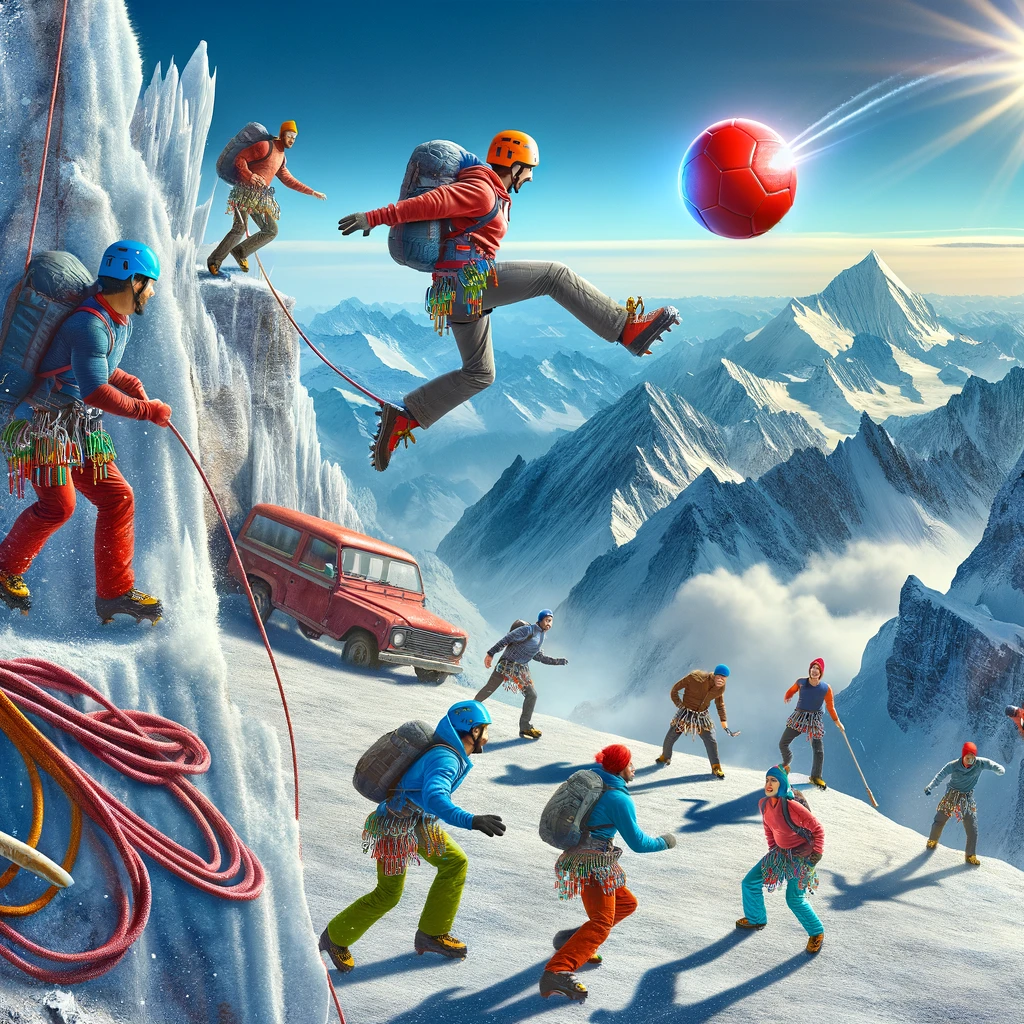
By Felix Dowsley, MTI Contributor
Every week, our school fields seventy two students and fourteen staff in an ever-rotating program of whitewater paddling, rock climbing, service work, and downhill skiing. I read every incident report and look for trends, hoping to learn as much as I can and anticipate emerging risks. And at the end of the day, I have concluded that the most hazardous activity in our program is… kickball.
Our staff comprises the fittest classroom teachers I’ve ever met because they are also professional mountain athletes. Each one of us at a minimum paddles class III whitewater and skis Southeastern black diamonds (more hazardous than you’d think— watch out for rocks, mud, and deathwish first-timers). Many of them race the Green Narrows, a few gear up for the Linville, and Monday morning staff coffee banter centers around the times (mellow or extreme) we spent outside over the weekend. Furthermore, the staff all manage risk aggressively, as demonstrated by our incredible safety record. Unless we’re playing field games.
In one kickball game after a morning of grueling trail building, I tore ligaments in my knee and another staff member herniated his back. A student who wins at the national level in downhill mountain bike racing suffered his worst musculoskeletal injury during a game of touch football. A world-champion kayak freestyler and downriver racer was in a back brace for weeks because of an Ultimate frisbee game. In the two days between the first and second drafts of this essay, my ski-patrolling, kayak shredding friend strained her leg muscle… during soccer PE.
Why is PE more dangerous than all of our skiing, paddling, and climbing days put together? Because the risk/chaos intersection hovers just under the radar of a seasoned mountain instructor’s well-honed attention. Mountain athletes and professionals are pros at managing risk. But we can get hurt when we aren’t really focused on safety and intentional movement, even if the risk level and physical intensity of the activity are far less than our max.
“Kickball” — aka PE at our program, and field sports in general– should result in fewer injuries than mountain adventure. But it results in more injuries with my team of mountain professionals coaching/playing because the scenario doesn’t demand the same level of attention. Serious mountain athletes and instructors know the moments when our movement needs every ounce of attention: maintaining footing and core tension while placing a “thank goodness” piece of pro or keeping laser focus on the set-up eddy while ferrying above a hazardous drop. PE, on the other hand, is geared towards fun, friendly competition, and sports fluency. As we tell our students, “none of us are going pro in four-square today.” The objective hazards are also low: a pothole in the sports field, maybe, and the potential for a collision with a student or basketball post. The terrain is laughably tame compared to the mountains where we honed our risk management craft. So as a result, we get loose, play into the kids’ desire for catharsis (nothing relieves tension like getting to peg your principal with a dodgeball), and forget that our thirty, forty, fifty year old bodies can’t plant and pivot like a fourteen year old, even if we can plant and pivot on granite or waterfalls.
The observation that in our program PE results in more injuries than mountain adventure can be applied metaphorically back to mountain pursuits. My all-time worst climbing injury happened on the ground after the last climb of the day. The first heavy drops of an afternoon thunderstorm sent my buddy and me hustling for the trailhead and slapping each other on the back for our excellent timing. I’d left my approach shoes in the car, keeping my Chacos on instead because hey, it was the first Friday afternoon of the summer and I was going climbing! But the boulders below the north side of Looking Glass are slippery as snot when it rains. Jangling down the trail, I skidded out, dropped a couple feet, and landed on the side of my left foot. Turns out the side of a chaco is a massive lever, and I heard the audible pop of my fifth metatarsal. I spent my upcoming Colorado trip running river shuttles for my wife and our friends, puttering around in a ducky, and trying not to think about the epic lines in Rocky Mountain National Park I’d dreamed about all school year. Though ducky surfing the town wave in Buena Vista was truly rad, I wanted to kick myself for treating my hike out from the mountains as casually as a game of kickball.
So how can I beware of kickball scenarios in the mountains? When mountain travel is less demanding and more casual, it makes sense to lower my intensity of exertion, but I shouldn’t let low intensity bring lack of focus along with it. I can stay aware of my body even if the required intensity of effort is lower than my high-focus moment. Messing around is fun, but if I’m not still aware of my body, what it’s doing, and its limits, gravity will set me straight the hard way. Plus I’m more likely to throw my body around in an unusual way if I’m not thinking about it. So when it’s my at-bat, I take a little breath to check myself before I wreck myself in a casual kickball game.
Felix is an educator and mountain professional in North Carolina.
